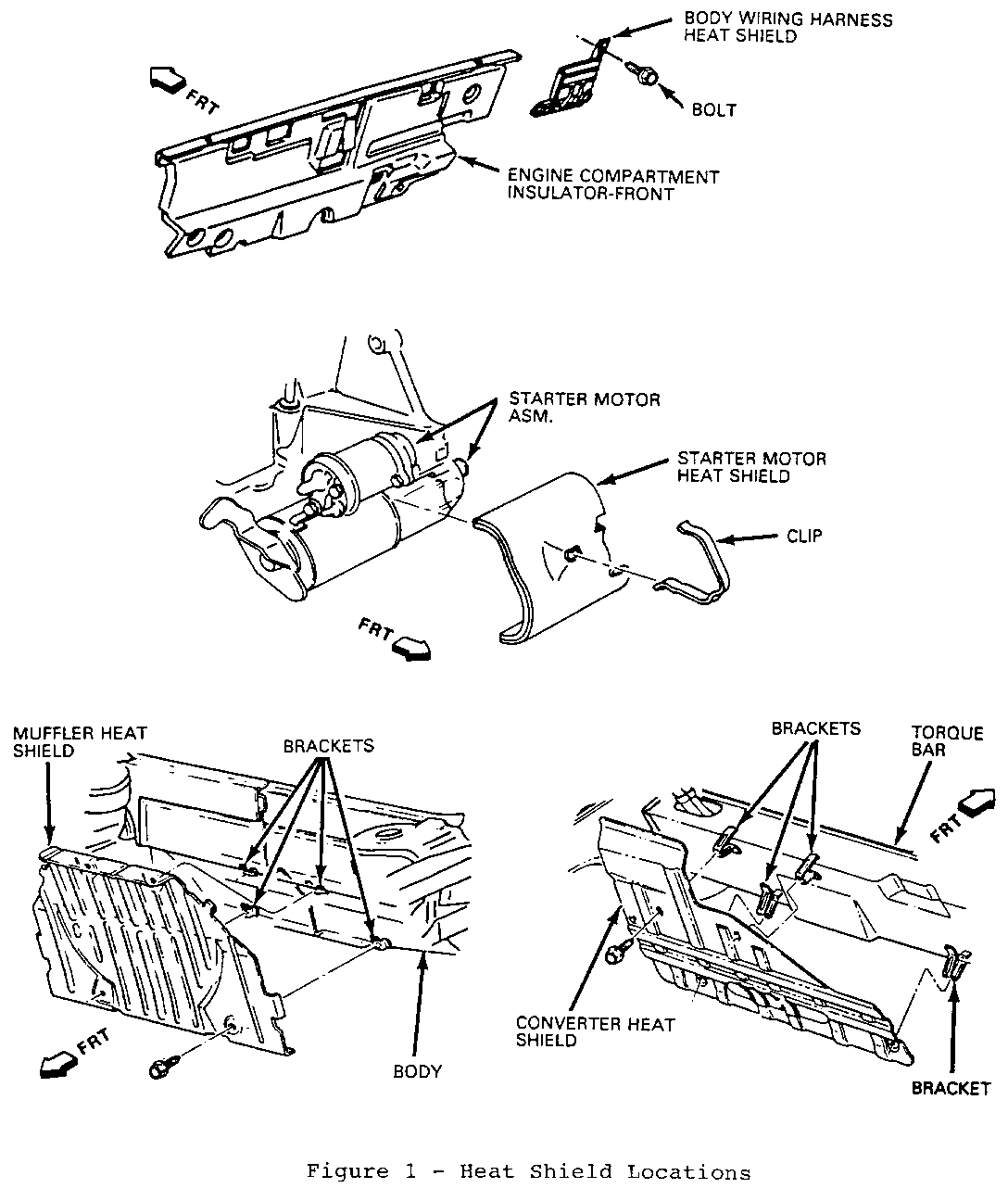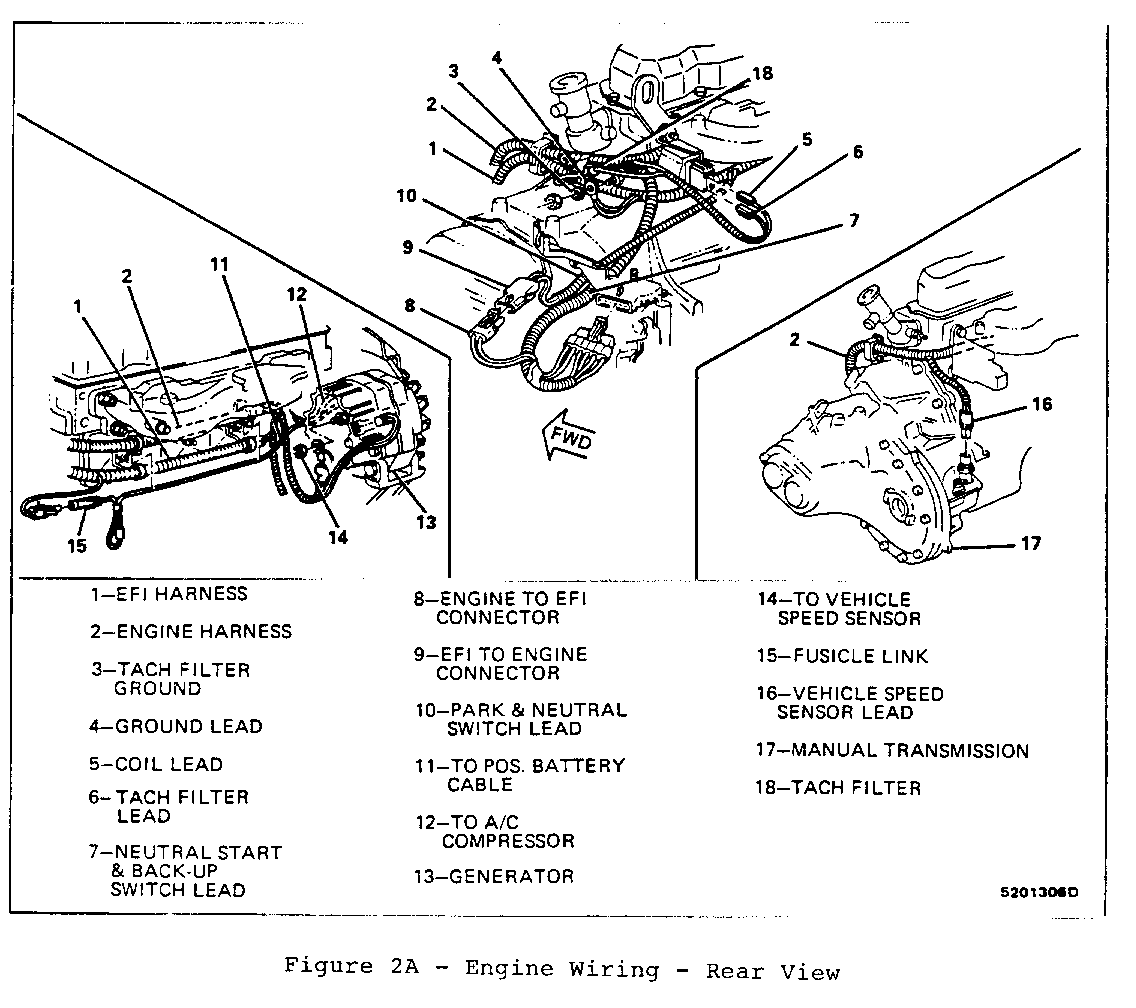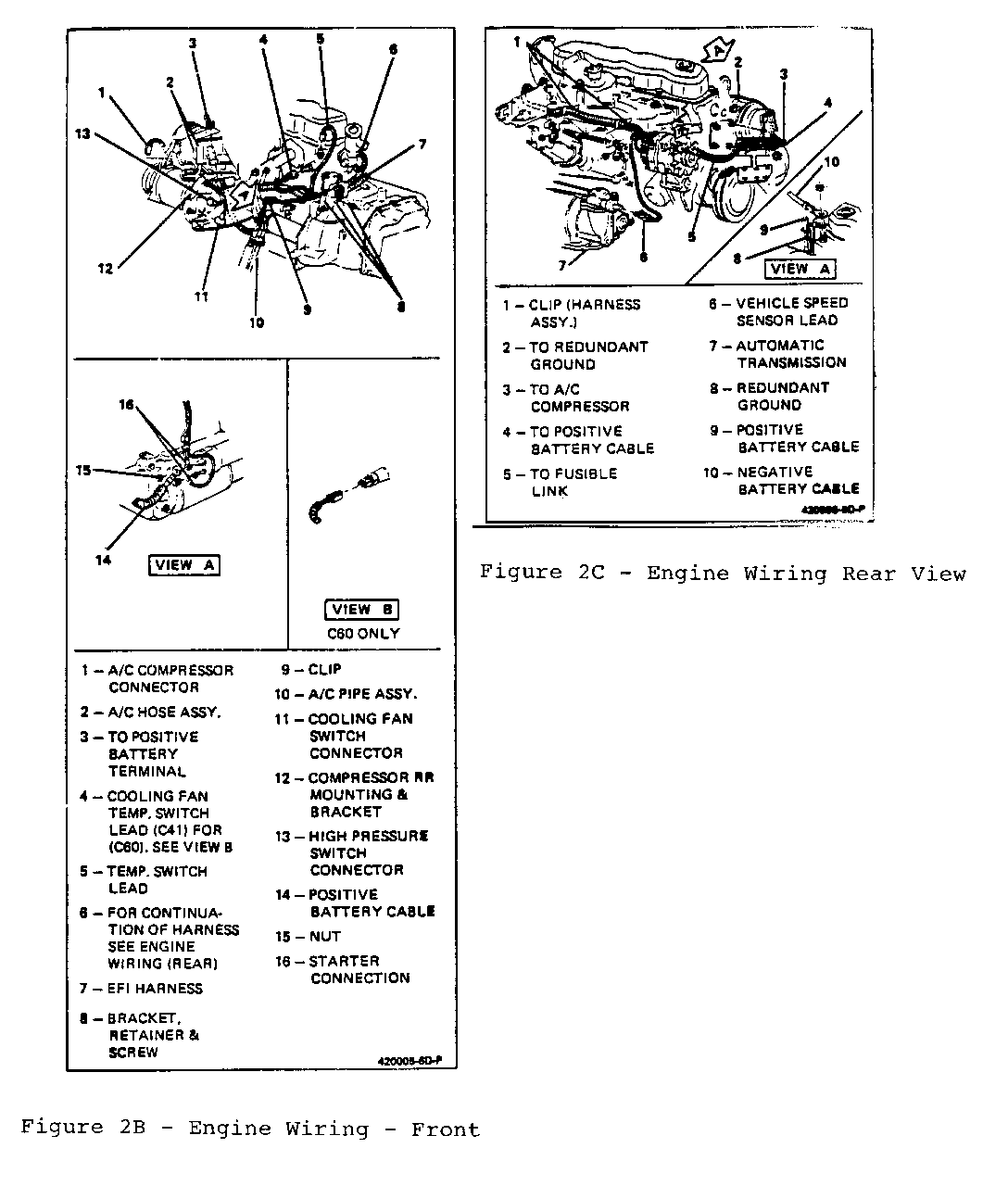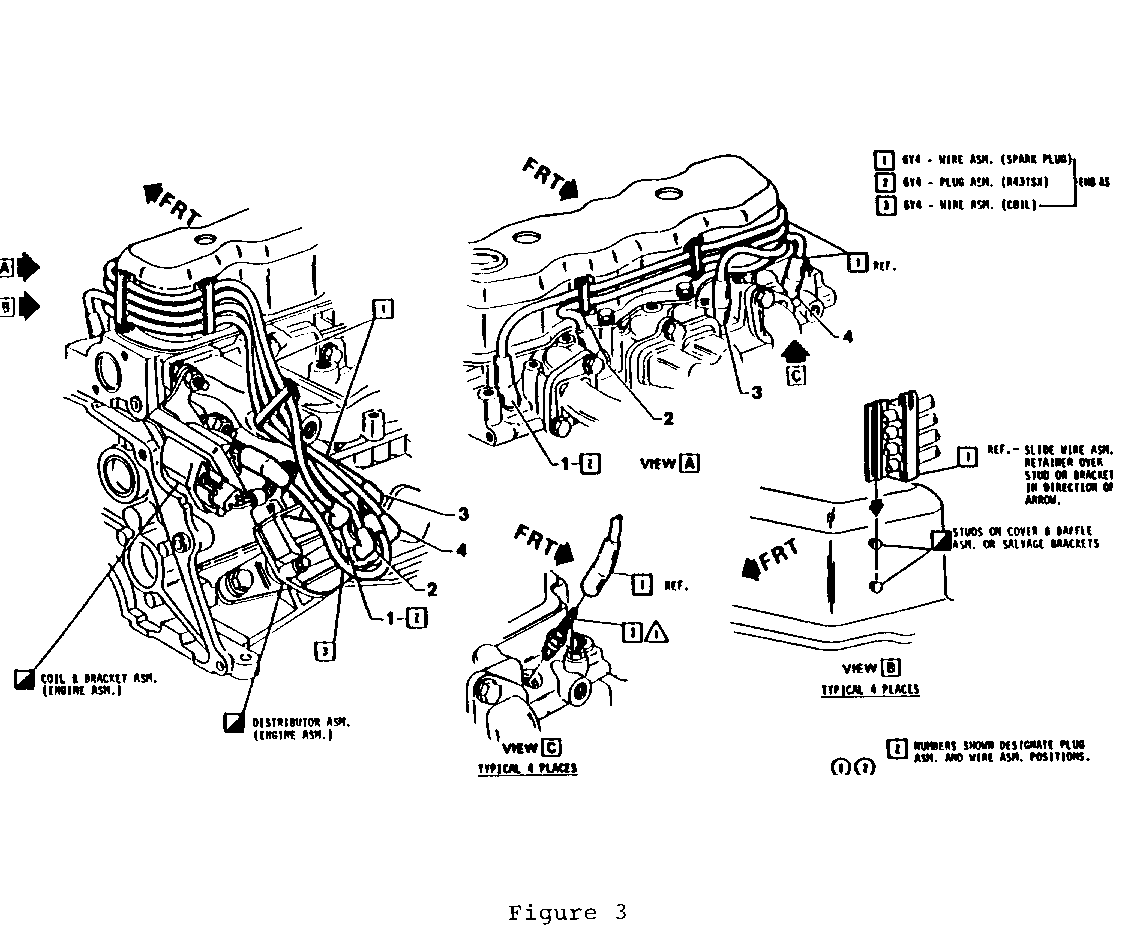1984-88 FIERO SERVICE MAINTENANCE PROCEDURES

Affected: 1984-88 FIERO MODELS
Pontiac Division of General Motors has recently sent booklets to owners of 1984 thru 1988 2.5L 4 cylinder Fieros. The purpose of this unprecedented move is in the opening statement. "Dear Fiero Owner: This booklet contains important maintenance and service information. Proper maintenance and service is very important for your Fiero. There have been engine fires in some Fieros - fires that have destroyed the cars - because they didn't get proper maintenance and service. Although we are aware of engine fires in fewer than one percent of 1984 Fieros, it is important and we want you to know what should be done."
This bulletin has been prepared so that you are better informed on how to properly service these cars. Containment of fuels is the key concern in this program. Everyone realizes how highly flammable gasoline is, but there are other combustible materials on todays modern automobiles. These include windshield washer fluid, engine oil, transmission fluid, power steering fluid, brake fluid, ethylene glycol or coolant, wires, wiring conduit, spark plug cables and plastic components.
The three ingredients needed for a fire are oxygen, fuel and heat. Oxygen is readily available in the air, and we have just listed numerous combustible items in the engine's environment, the only other ingredient is a heat source. The exhaust manifold is such a source. With the hood closed and the car traveling down the road under a load, the exhaust manifold can reach temperatures of 1,200 degrees Fahrenheit, enough to ignite many of the combustibles in the engine compartment.
When a customer comes to you for service, they are depending on your expertise to maintain their car. Proper repairs and good maintenance will keep these combustibles away from the source of heat. That's something all service technicians should be trained to do - to keep combustible and flammable materials contained in their systems.
Here is a list of items to look for when servicing one of these cars:
Under the front hood:
- Check coolant recovery tank. A low level may indicate a problem.
- Check hose clamps for tightness.
- Check hoses to be sure they are pliable. A hard, brittle or damaged hose should be replaced.
- Check the coolant fan and fan relay. There should be no interference between the fan and fan shroud. The fan relay controls coolant fan operation to maintain proper coolant temperature and a malfunction could allow the engine to overheat. If the car has air conditioning, the fan will run whenever the air conditioning is turned on.
In the engine compartment:
- Check heater and coolant hose clamps for tightness.
- Check the condition of all heater and coolant hoses. Once again, damaged hoses should be replaced.
- Check for oil leaks at the valve cover. If it is removed for service do not reseal with RTV, use gasket #10101791 (Dealer Service Bulletin 89-6-62).
- Check the PCV grommet, valve and hose, the breather hose and its grommet. An oil leak here can get on the manifold and is a potential hazard. If any parts are defective, they should be replaced.
- Check the automatic transmission dipstick for leaks. This could be caused by a plugged vent.
- Check the hose splices between the two metal transmission fluid cooling lines for tightness and leaks.
- Check the heat shields to be sure they are tight and in good shape. (Refer to Figure 1 for locations.)
- Check the electrical system to be sure all harnesses are secured where they are supposed to be so they don't rub on sharp edges or touch the manifold. (Refer to Figure 2 A,B and C for proper routing.)
- Check to be sure all spark plug wires are routed correctly, are in their retaining clips and don't touch the manifold. (Refer to Figure 3 for proper routing).
If the cylinder head is removed, be sure to retorque properly. Use new cylinder head bolts and tighten them in the correct sequence as shown in the 1986 Fiero service manual. Use a torque angle meter such as Kent-Moore tool J-36660.
Head Bolt Position GM Part Number -------------------- -------------- 1-8 10044566 9 10044568 10 10044570
Maintenance tips:
Engine oil and filter should be replaced every 3000 miles. use only SG, SFICC, or SF/CD oil with the recommended SAE 5W30 viscosity. Use the following oil filters:
84-87 - 25010908 PF 51 88 - 25012305 PF 1072 (Internal Filter)
The air cleaner element should be replaced every 15,000 miles or 24 months (9,000 miles or 12 months if operating in dusty areas). Use only AC Type 913C air filter with foam wrap, GM part #25043317. NO Substitutes.
Coolant should always be a 50/50 mixture of a correct antifreeze which meets GM Specification 1825-M.
The proper coolant level on the coolant recovery tank is FULL, when the engine is at its normal operating temperature (about 195-230 degrees Fahrenheit).
On the inside of the rear deck lid there should be a Campaign Correction Label showing completion of Campaign 84-C-15 for 1984 vehicles and 87-C-11 for 1985-87 vehicles. If it is not there, inform the customer that their car has an outstanding recall on it and refer them to their Pontiac dealer.
DRAINING AND REFILLING THE COOLANT SYSTEM
Whenever the cooling system experiences a major loss of coolant such as a broken hose or any time engine service is performed which requires draining of the system, the following procedure should be used.
IMPORTANT: BLOCK DRIVE WHEELS, place transmission in PARK (automatic transmission), or NEUTRAL (manual transmission) and set the parking brake.
1. Remove radiator cap when engine is cool by:
Slowly rotating cap counterclockwise to detent. (Do not press down while rotating).
Wait until any residual pressure (indicated by a hissing sound) is relieved.
After all hissing ceases, press down on cap while continuing to rotate counterclockwise.
CAUTION:
To avoid the danger of being burned, do not remove radiator cap while engine and radiator are still hot. Scalding fluid and steam may be blown out under pressure.
2. Remove thermostat by using the wire handle to lift it out of the housing.
3. With the thermostat removed, reinstall the thermostat housing cap.
4. Open radiator drain valve and block drain plugs to drain coolant. Open coolant pipe plugs.
5. Close valve. Reinstall drain plugs and add sufficient water to fill system.
6. Run engine, drain and refill the system, as described in steps 4 and 5 a sufficient number of times, until the drained liquid is nearly colorless.
7. Allow system to drain completely. Then close radiator drain valve tightly, and reinstall block and coolant pipe drain plugs.
8. Remove recovery cap leaving hoses in place. Remove coolant recovery tank and empty of fluid. Flush tank with clean water, drain and reinstall.
9. Add sufficient water and ethylene glycol coolant meeting GM Specification 1825-M, to provide the required freezing and corrosion protection - at least 50% solution -37 degrees C (-34 degrees F).
Fill radiator to the base of the radiator fill neck and add sufficient coolant to the recovery tank to raise the level to the "FULL" mark. Reinstall recovery tank cap.
10. Run engine, with radiator cap or thermostat housing cap removed, until normal operating temperature is reached. (Radiator upper hose becomes hot.)
11. With engine idling, add coolant until level reaches bottom of filler neck and reinstall thermostat and cap and radiator cap making certain arrows line up with overflow tube.
CAUTION:
UNDER SOME CONDITIONS, THE ETHYLENE GLYCOL IN ENGINE COOLANT IS FLAMMABLE. TO HELP AVOID BEING BURNED WHEN ADDING COOLANT, DO NOT SPILL IT ON THE EXHAUST SYSTEM OR HOT ENGINE PARTS.
It is the owner's responsibility to keep the freeze protection at a level appropriate to the temperatures which may occur in the area of vehicle operation.
Maintain cooling system freeze protection at -37 degrees C (-34 degrees F) to ensure protection against corrosion and loss of coolant from boiling, even though freezing temperatures are not expected.
Add ethylene glycol base coolant that meets GM Specification 1825-M, when coolant additions are required because of coolant loss, or to provide additional protection against freezing at temperatures lower than -37 degrees C (-34 degrees F).
NOTICE: Alcohol, methanol base coolants, or plain water are not recommended at any time.
Engine cooling, the protection level should be maintained to at least -37 degrees C (-34 degrees F).
Dealer Service Bulletins and Service Manuals are available through HELM, INCORPORATED, P.O. Box 07130, Detroit, MI, 48207, or by calling HELM at 1-800-782-4356.




General Motors bulletins are intended for use by professional technicians, not a "do-it-yourselfer". They are written to inform those technicians of conditions that may occur on some vehicles, or to provide information that could assist in the proper service of a vehicle. Properly trained technicians have the equipment, tools, safety instructions and know-how to do a job properly and safely. If a condition is described, do not assume that the bulletin applies to your vehicle, or that your vehicle will have that condition. See a General Motors dealer servicing your brand of General Motors vehicle for information on whether your vehicle may benefit from the information.
